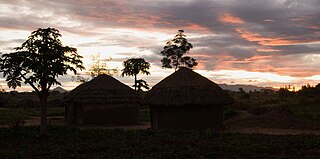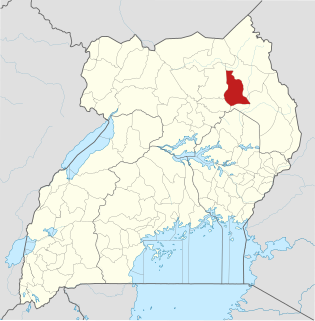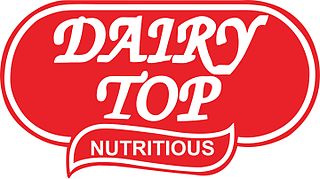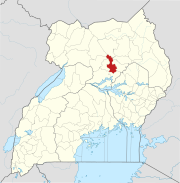Related Research Articles

Pader District is a district in Northern Uganda. It is named after Pader, the chief municipal, administrative and commercial town in the district, where the district headquarters are located.

Apac District is a district in the Northern Region of Uganda. The Town of Apac hosts the district headquarters.

Moyo District is a district in Northern Region of Uganda. Like many other Ugandan districts, it is named after its "chief town", Moyo, where the district headquarters are located.

Amolatar District is a district in Northern Uganda. Like many other Ugandan districts, it is named after its main municipal and administrative centre, Amolatar Town.

Commercial sorghum is the cultivation and commercial exploitation of species of grasses within the genus Sorghum. These plants are used for grain, fibre and fodder. The plants are cultivated in warmer climates worldwide. Commercial Sorghum species are native to tropical and subtropical regions of Africa and Asia.
Uganda's favorable soil conditions and climate have contributed to the country's agricultural success. Most areas of Uganda have usually received plenty of rain. In some years, small areas of the southeast and southwest have averaged more than 150 millimeters per month. In the north, there is often a short dry season in December and January. Temperatures vary only a few degrees above or below 20 °C but are moderated by differences in altitude.

Abim District is a district in Northern Uganda. It is named after its 'chief town', Abim, where the district headquarters are located.
The Mukwano Group of Companies, commonly known as the Mukwano Group, is a conglomerate based in Uganda, with operations in other East African countries.

Maracha District is a district in the West Nile sub-region, in the Northern Region of Uganda. It was formed in 2006 from Arua District.
Roofings Group, often referred to simply as Roofings, is the largest manufacturer of steel construction materials in Uganda, with installed production capacity of 72,000 metric tonnes annually.
Kakira Sugar Works Limited, often called Kakira Sugar Works, is a leading sugar manufacturer in Uganda, the third-largest economy in the East African Community.
Nile Breweries Limited (NBL) is the leading beer manufacturer in Uganda.
The Soroti–Dokolo–Lira Road is a road in Uganda, connecting the towns of Soroti in Soroti District, Dokolo in Dokolo District, and Lira in Lira District.
Karuma is a settlement in the Western Region of Uganda.
Adekokwok Hydroelectric Power Station is an 8 megawatts (11,000 hp) mini hydroelectric power project in Uganda.
Pearl Dairy Farms Limited, often referred to as Pearl Dairy, is a dairy processing company in Uganda.
The Osukuru Thermal Power Station is a planned 12 MW (16,000 hp) chemical-fired thermal power plant in Uganda.

Lakeside Dairy Limited (LDL), is a dairy processing company located in Mbarara, Uganda.

Rwanda produces the least quantity of granular brown sugar among four of the six countries of the East African Community, namely Kenya, Rwanda, Tanzania and Uganda, accounting for about 12,000 metric tonnes annually as of August 2016. With national consumption measured at 90,000 metric tonnes annually in 2016, it is expected that by 2020, annual consumption will have reached 160,000 metric tonnes, costing over US$150 million to import.
References
- ↑ Okino, Patrick (17 May 2015). "Lira residents want alcohol plant closed". New Vision . Kampala. Retrieved 25 May 2016.
- ↑ GFC (25 May 2016). "Distance between Baropuu Pentecostal Assemblies of God, Erute, Northern Region, Uganda and Lira, Northern Region, Uganda". Globefeed.com (GFC). Retrieved 25 May 2016.
- 1 2 Asiimwe, Dicta (14 March 2015). "Cassava growers in Uganda find market at ethanol plant". The EastAfrican . Nairobi. Retrieved 25 May 2015.
- 1 2 3 Oketch, Bill (25 May 2016). "Uganda: Cassava Production Rises As Farmers Benefit From Ethanol Plant". Daily Monitor via AllAfrica.com . Kampala. Retrieved 25 May 2016.
